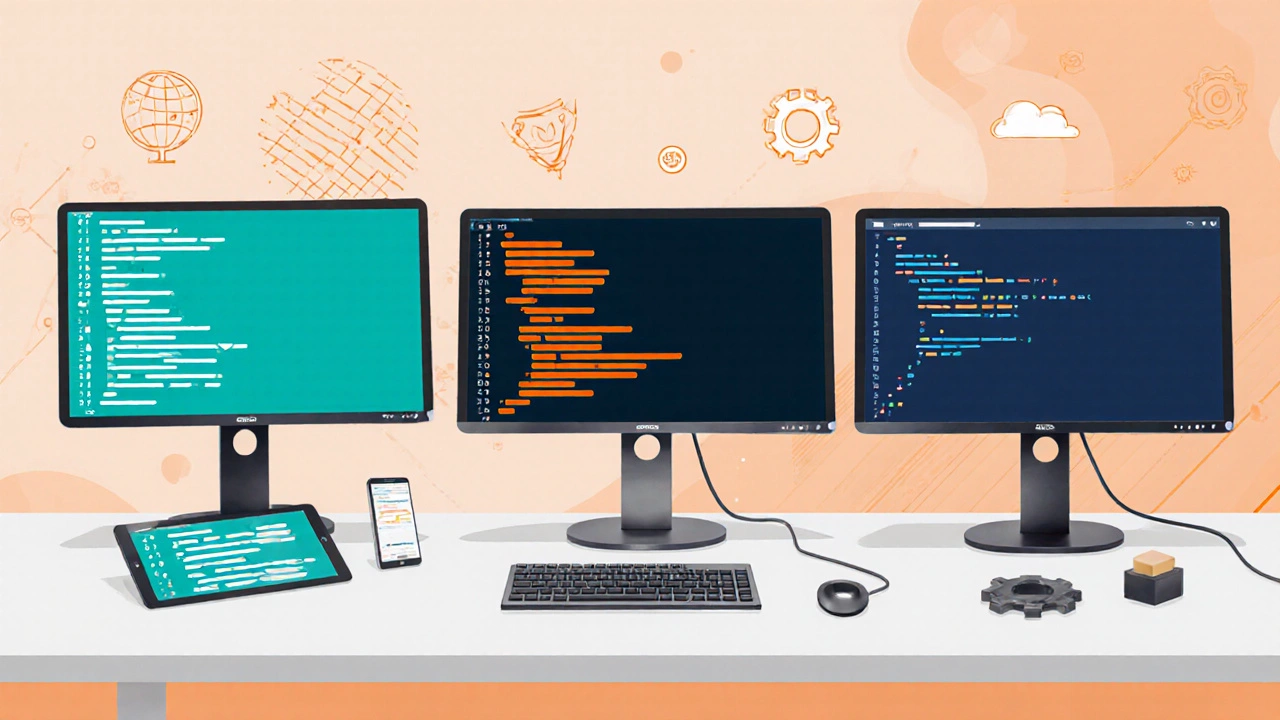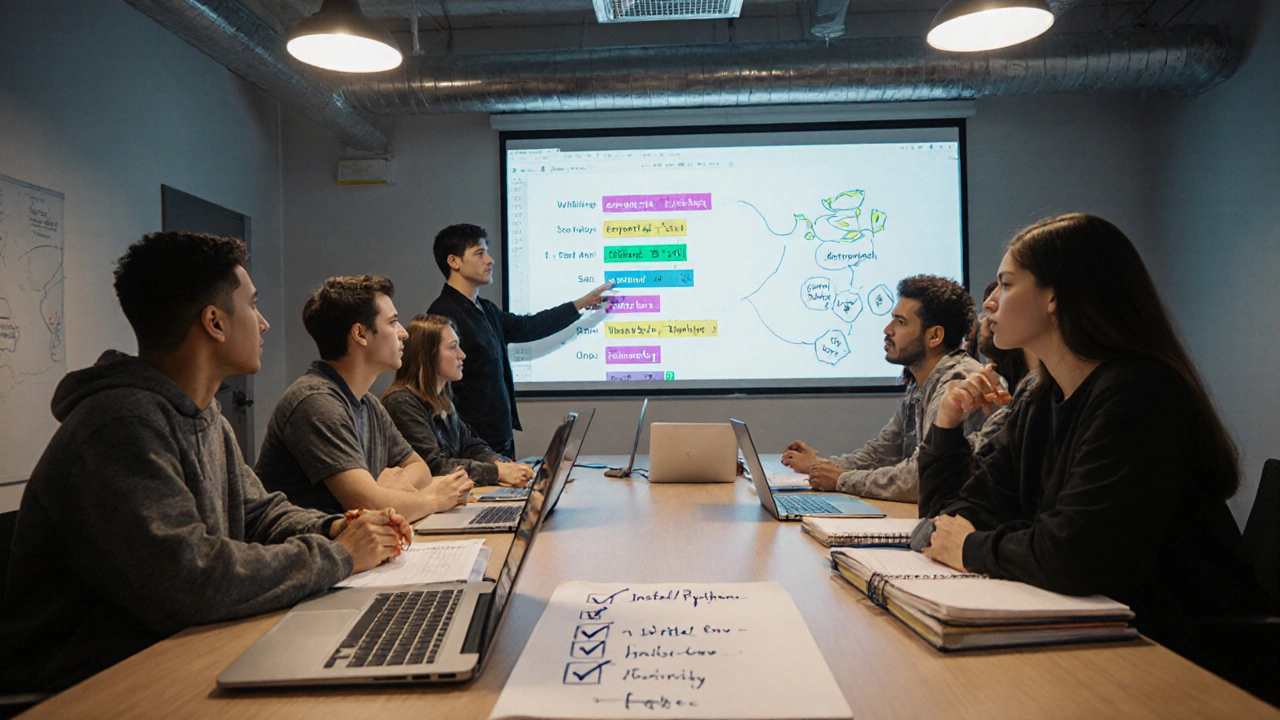When you hear people rave about Python is a high-level, interpreted programming language that lets you write clear code with few lines, you wonder if it really lives up to the hype. In this guide we break down what makes Python feel “easy”, compare it with other starter languages, flag the stumbling blocks newcomers hit, and give you a toolbox of tips and resources - including the right coding class structured learning program - so you can decide whether Python is the right first step for you.
What Exactly Is Python?
Python was created in 1991 by Guido van Rossum. It belongs to the family of programming languages formal languages used to communicate instructions to a computer. Unlike compiled languages that need a separate build step, Python is interpreted, meaning you write code and run it directly through a integrated development environment software that combines a code editor, debugger, and console like VS Code or PyCharm. Its design philosophy emphasizes readability, with a syntax that mirrors plain English, and a massive standard library a collection of ready‑made modules for common tasks that handles everything from file I/O to web requests.
Why So Many Call Python “Beginner‑Friendly”?
There are three core reasons:
- Straightforward syntax: Python eliminates curly braces and semicolons. Indentation alone defines code blocks, which forces clean formatting and makes the code easier to skim.
- Dynamic typing: You don’t need to declare variable types upfront. A variable a named storage location for data can hold an integer one moment and a string the next, letting you experiment without boilerplate.
- Immediate feedback: Running a script shows results instantly, so you can test a loop a repeated sequence of statements or function and see the output before moving on.
Put together, these traits reduce the cognitive load for newcomers, letting them focus on problem solving instead of language quirks.
How Python Stacks Up Against Other Starter Languages
| Language | Typical learning curve | Readability | Community size | Best use case for beginners |
|---|---|---|---|---|
| Python | Low | Very high | Large | Data science, web scripting, automation |
| JavaScript | Medium | Medium | Very large | Web front‑end development |
| Java | Medium‑high | Medium | Large | Enterprise applications |
| Ruby | Low | High | Medium | Web apps (Rails) |
Python leads on readability and ease of use, while JavaScript wins for immediate visual results in the browser. If you aim for data‑driven tasks, Python is the clear pick; if you crave instant UI feedback, JavaScript may feel easier.

Common Hurdles New Learners Face
Even a language marketed as simple can trip up beginners. Here are the top three pain points and why they happen:
- Understanding indentation rules: Python uses whitespace to define scopes. A stray space can throw
IndentationErrorand leave you confused. The lesson is to set your IDE the tool you write code in to show invisible characters. - Managing packages: Installing third‑party libraries pre‑written code collections via
pipcan feel mysterious. Using virtual environments isolates dependencies and keeps the system tidy. - Debugging without a compiler: Because Python doesn’t compile ahead of time, syntax errors only appear at runtime. Learning to read traceback messages and using the built‑in
pdbdebugger or IDE breakpoints can turn frustration into a learning moment.
Proven Strategies to Accelerate Your Python learning
Here are five actionable steps that have helped thousands of beginners move from “Hello, World!” to building real scripts:
- Start with interactive consoles: Use Jupyter Notebook a web‑based interactive environment or the REPL to experiment line by line. Immediate feedback cements concepts.
- Build tiny projects: Instead of vague “learn loops”, code a simple calculator, a to‑do list, or a weather fetcher using an API. Real‑world context makes abstract syntax memorable.
- Leverage the community: Join the Python community online forums, Discord servers, and local meetups. Asking questions on Stack Overflow or Reddit often yields quick, practical answers.
- Pair programming: Find a study buddy or enroll in a coding class structured learning program with peers. Explaining concepts aloud reveals gaps in understanding.
- Follow the “three‑minute rule”: Spend the first three minutes of each session reviewing the previous code. This spaced repetition technique dramatically improves retention.

Choosing the Right Coding Class or Resource
Not every class fits every learner. Consider these decision criteria before you sign up:
| Criteria | Why it matters |
|---|---|
| Teaching style | Do you prefer video lectures, live workshops, or hands‑on labs? |
| Curriculum depth | Are you aiming for a quick intro or a full‑stack Python path? |
| Mentor access | Having a real person to review code accelerates learning. |
| Project portfolio | Classes that culminate in a showcase project boost your resume. |
| Cost & time commitment | Balance your budget and schedule; many free MOOCs exist. |
Platforms like Coursera, Udemy, and local Sydney bootcamps often offer trial weeks. Test a couple, see which teaching style clicks, and then commit.
Quick Checklist Before You Start Coding
- Install the latest Python 3.x from
python.org. - Set up a virtual environment with
python -m venv env. - Choose an IDE (VS Code with the Python extension works well).
- Run
print('Hello, World!')in the REPL to confirm everything works. - Pick a small project idea and write a to‑do list script within the first week.
Cross each item off, and you’ll have a solid foundation to keep growing.
Is Python really suitable for absolute beginners?
Yes. Python’s plain syntax, dynamic typing, and extensive standard library reduce the amount of “boilerplate” you need to write, letting newcomers focus on core programming concepts.
Do I need a computer science degree to learn Python?
No. While a CS background helps understand deeper topics like memory management, most beginners pick up Python through self‑study, online courses, or a short coding class.
How long does it take to become proficient?
Progress varies, but with consistent 1‑hour daily practice, many learners reach a comfortable level for small projects in 4‑6 weeks.
What are the best free resources?
The official Python documentation, “Automate the Boring Stuff with Python” (online book), and free MOOCs on Coursera or edX provide solid foundations.
Should I learn Python before or after JavaScript?
If your goal is data analysis or automation, start with Python. For web front‑end work, JavaScript is essential, but learning Python first can make logical thinking easier.
